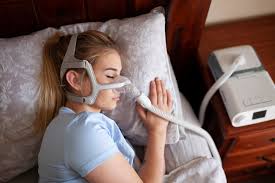
Continuous Positive Airway Pressure CPAP therapy is often prescribed for sleep apnea and other breathing-related sleep disorders. While CPAP equipment can bring significant benefits, there are scenarios where poorly managed or misused CPAP gear can actually worsen symptoms or interfere with sleep quality. In this article, we explore how CPAP equipment can—paradoxically—make sleep disorders worse, what signs to watch for, and practical fixes you can try to restore comfortable, effective therapy.
When CPAP Equipment Becomes a Problem: Key Pitfalls
- Mask leaks and poor mask fit
One of the most common issues is a leaking mask. If the mask seal is broken—even slightly—air escapes, reducing the effective airway pressure and disrupting sleep. A mask leak can also direct air into your eyes, dry out your nasal passages, or cause noise that awakens you
Over time, the cushion or silicone may degrade, causing exhalation ports to not seal properly. A mask that was once comfortable may start to leak after months of use. - Incorrect pressure settings and difficulty exhaling
CPAP therapy works by delivering a constant or auto-adjusting pressure. But if the pressure is set too high, some users feel as though they are fighting the airflow when exhaling. This “inhalation/exhalation mismatch” can cause discomfort, sleep fragmentation, or cause you to subconsciously resist the therapy. - Dry mouth, nasal congestion, and upper airway irritation
Dryness is another frequent complaint. Pressurized air (especially without adequate humidification) can strip moisture from the nasal passages and throat, leading to congestion, runny nose, or nosebleeds.
If you breathe through your mouth at night (especially under a nasal mask), the CPAP equipment may aggravate dryness—and paradoxically, worse breathing discomfort. - Skin irritation, pressure sores, and facial discomfort
Wearing a mask for several hours each night exerts pressure on facial skin. Overly tight headgear or a poor mask frame can lead to red marks, sores, or skin breakdown—especially on the nose bridge or cheeks. This irritation may lead users to loosen the mask, increasing leaks. - Claustrophobia, mask anxiety, or disrupted sleep adaptation
Some users experience anxiety or claustrophobic feelings when wearing a mask. That mental resistance can translate into tossing, awakenings, or premature mask removal (sometimes unconsciously
In early use, the novelty of the mask, sound, or airflow may lead to restless sleep or awakenings, which can be mistaken for “worsened” sleep disorder. Over time, many users acclimate. - Infection risk from poor hygiene
Though less common, incorrectly cleaned CPAP equipment (mask, tubing, humidifier chamber) can harbor bacteria or mold, potentially leading to respiratory irritation or infections. This risk underscores the importance of daily or frequent cleaning
